- Traders cash out of US and European shares
- Sterling at year's low on UK Omicron restrictions
- Dollar rebounds
Key Events
Futures on the Dow Jones, S&P 500, NASDAQ and Russell 2000 are all pointing to a lower US open on Thursday and European shares, after opening higher today, have now fallen into negative territory as well.
And, after a three day rally, the oil price slid.
Global Financial Affairs
Perhaps, the reason for the decline in US futures contracts is investors cashing out after yesterday's bullish display on Wall Street.
The slump in the STOXX 600 follows a rally earlier in the week when, like the S&P 500, the pan-European benchmark notched up its best two-day performance of the year. Nevertheless, while the S&P 500 reclaimed all the losses incurred when the first news of the new Omicron variant hit, the European index has struggled to recapture lost territory, falling 0.6% on Wednesday.
Thursday's Asian session was mixed. Encouraging news about Pfizer (NYSE:PFE) and BioNTech (NASDAQ:BNTX) vaccines didn't appear to convince regional traders. Market observers noted the performance in Asia was driven by caution ahead of the release of Friday's US inflation data and any implication it could have on next week's Fed meeting.
China's Shanghai Composite rose 1%, extending its rally to a third day, after the country's consumer prices rose 2.3% yearly, less than the 2.5% expected. China's producer price figures weren't uniformly even. On the positive side they declined from 13.5% the previous month however, the data surged 12.9% year-over-year, higher than the 12.4% forecast.
In another contradiction to the view that investors are positive about the economic outlook, investors added US Treasuries, including the 10-year note, to their portfolios which ended a three-day rise in yields.
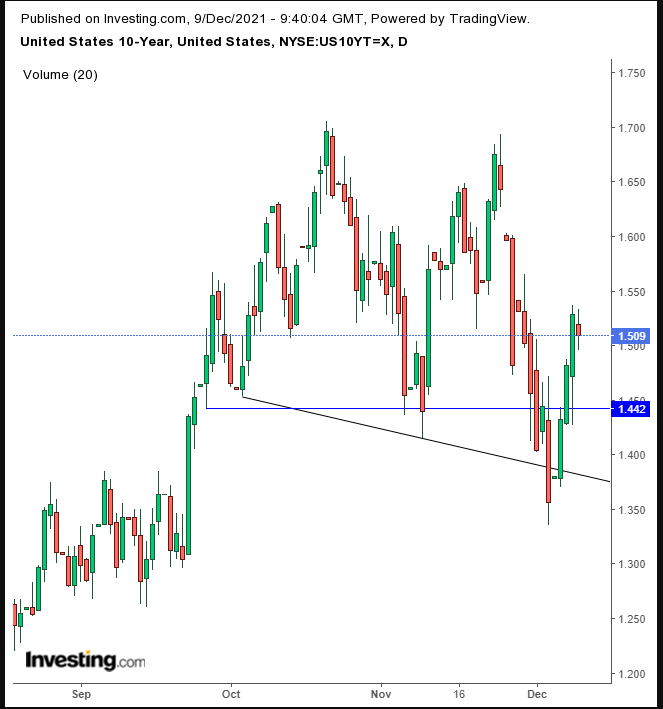
While we initially drew a double top based on the bond's former trading movements (blue line), we're updating it though, as the recent third low appears to be part of the pattern. Therefore, we might be looking for a downsloping top. Given that yields fall as Treasuries rise, it would be a bearish sign for equities if this proves to be correct.
The dollar opened higher and extended a rebound from yesterday's sharpest selloff in nine sessions.
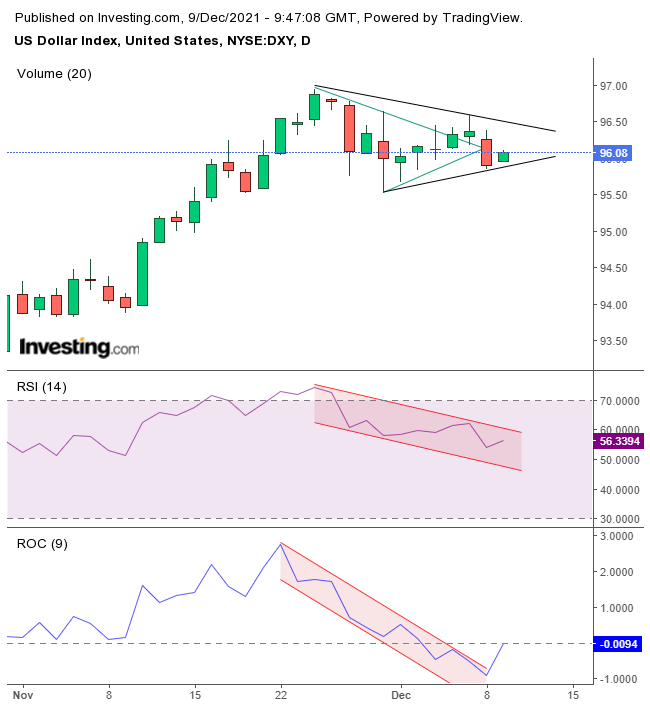
We're updating our dollar pennant after the greenback's price meandered through the apex, showing it bore no technical significance. Perhaps the larger pennant will have been part of a meaningful pattern, which is a piece of the measurable supply-demand struggle. We can see this by analyzing the different stages between the RSI and the ROC.
Both measure momentum, but each reacts differently. While the RSI is still in a downtrend, the ROC may have reversed. Such changes in velocity could be the prelude for a sharp move, the kind that would attest to a trackable pattern and its apparent completion.
Gold edged lower.
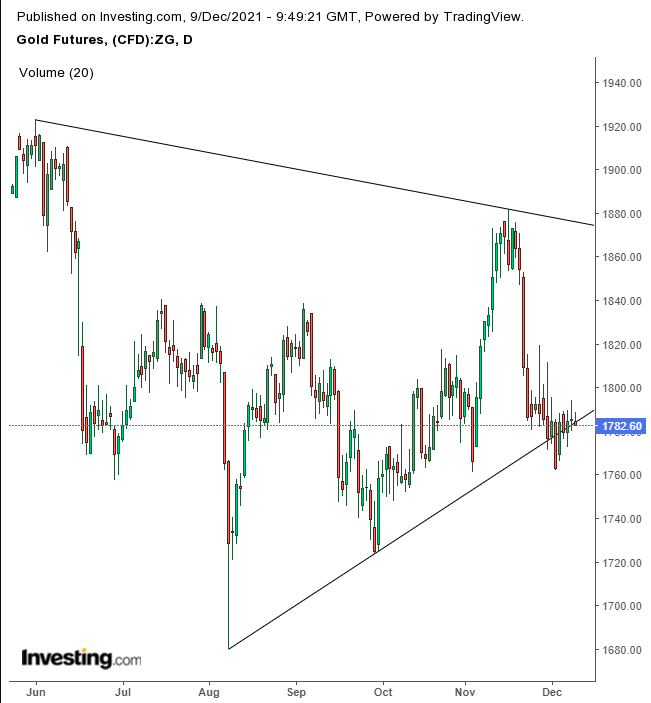
The jury is still out on the yellow metal's trajectory, as it struggles on top of its uptrend line since the August bottom. An upside dollar breakout would presumably weigh on gold.
In the UK, sterling fell to its lowest level of the year after Prime Minister Boris Johnson announced the introduction of Plan B restrictions yesterday. There are estimates that the UK economy could lose $2.6 billion every month due to these new measures.
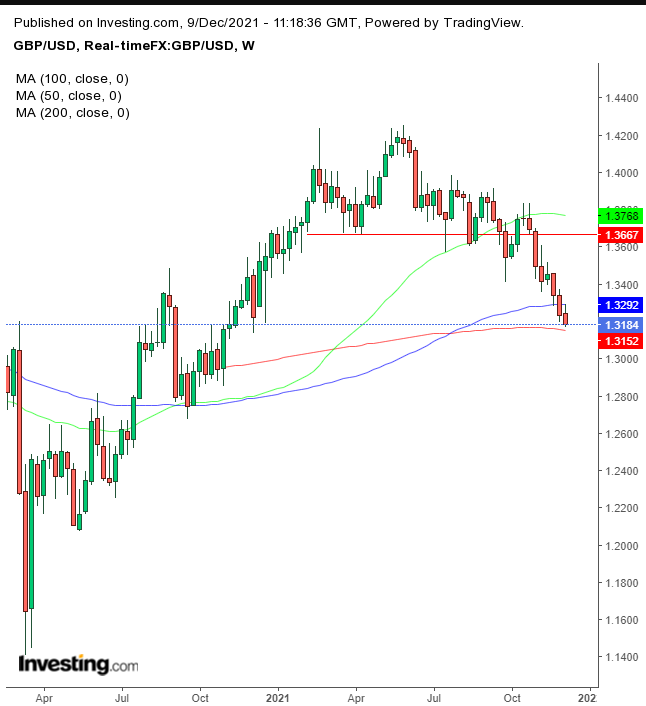
The pound is falling for the sixth of seven weeks, having completed a weekly H&S top.
Bitcoin fell for the second day.
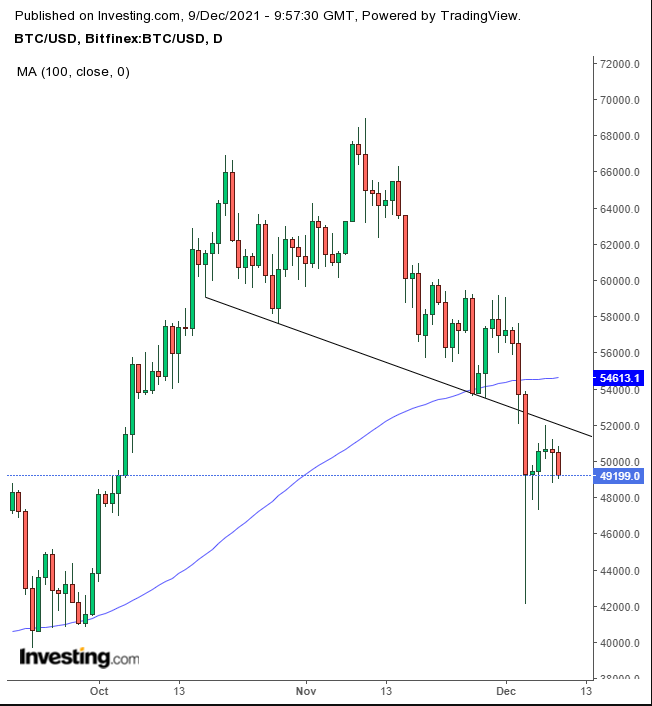
The cryptocurrency had retested the neckline of a downsloping H&S top.
Crude oil edged lower, toward $72 a barrel. Asian buyers are not upping demand after the Saudis increased prices. The price is stable for now but headline-driven volatility may be on the horizon.
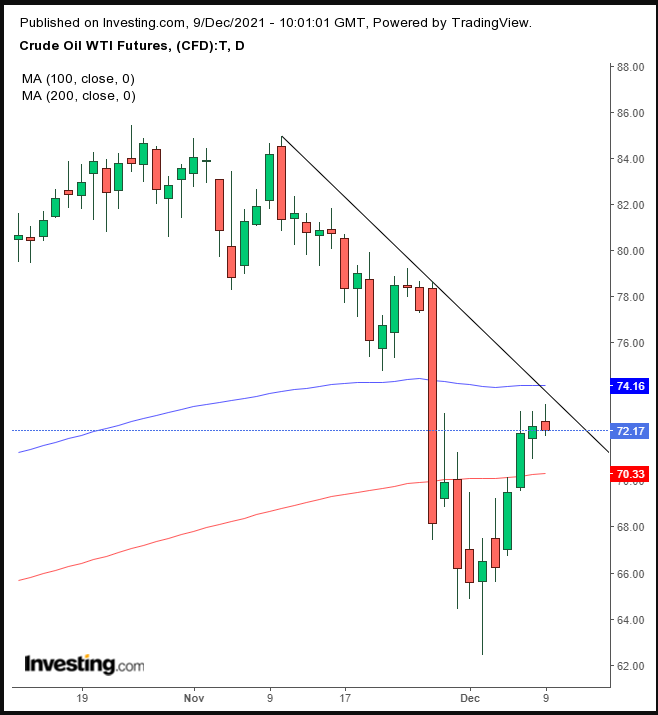
The price fell away from a falling trendline since the Nov. 10 high.
Up Ahead
- UK GDP is released on Friday.
- ECB President Christine Lagarde is due to speak on Friday.
- On Friday, US CPI figures are due to be published.
Market Moves
Stocks
- The STOXX 600 rose 0.2%
- Futures on the S&P 500 fell 0.2%
- Futures on the NASDAQ 100 fell 0.1%
- Futures on the Dow Jones Industrial Average fell 0.2%
- The MSCI Asia Pacific Index rose 0.7%
- The MSCI Emerging Markets Index rose 0.4%
Currencies
- The Dollar Index rose 0.1%
- The euro fell 0.2% to $1.1322
- The Japanese yen rose 0.2% to 113.48 per dollar
- The offshore yuan was little changed at 6.3439 per dollar
- The British pound was little changed at $1.3206
Bonds
- The yield on 10-year Treasuries declined two basis points to 1.50%
- Germany's 10-year yield declined two basis points to -0.33%
- Britain's 10-year yield fell four basis points to 0.74%
Commodities
- Brent crude was little changed
- Spot gold was little changed
